

Everything an Author Needs to Know About Line Editing

When it comes to writing a great story, sometimes the hardest part is making your words sound… good . Seriously, it’s easier to come up with epic fantasy worlds and steamy romance stories than it is to artfully craft prose that readers froth over.
But do you wanna know a secret? All of your favorite authors have help getting those words right.
That’s because they all either work with or have worked with line editors in the past and use what they’ve learned to become expert wordsmiths. Not that I’m trying to undersell the skill of any author, mind you—we all do this because we love writing those riveting tales—but to highlight that there is external, professional help out there you can leverage.
That’s where line editing comes in. In this article, we’re going to discuss exactly what this kind of editing is, the key elements of it, the line editing process, and what it’s like working with this kind of editor.
And, by the time we’re done, you’ll be ready to power up your prose and hang with the best authors out there.
What is Line Editing?
Take it from me, a humble editor: it can be difficult to wrap your head around all the different kinds of editing . Most folks grow up thinking an editor is either someone who fixes spelling and grammar errors or someone who works for a publisher to help authors improve their books.
Line editing falls somewhere in between those two ends of the spectrum, but it’s just as important.

Defining Line Editing
Line editing is a very qualitative style of editing, focusing on the use of language to convey your story with clarity, fluency, and style. Line editing zeroes in on the finer details of writing, examining each sentence and paragraph to ensure they are well-constructed, clear, and effectively contribute to the overall story.
The power of line editing lies in its nuanced approach to refining an author’s voice . It's about enhancing the rhythm and pace of your writing, improving readability, and ensuring that your prose jives with your intended audience.
Line editing scrutinizes word choice, sentence structure, coherence, and style, which are arguably the most difficult things for authors to master.
Line Edit vs. Other Editing Types
To appreciate the value of line editing, you need to be able to differentiate it from other stages of the editing process. Here’s a brief overview:
- Developmental editing focuses on the manuscript as a whole, addressing structural issues, plot holes, character development, and other big-picture elements.
- Copy editing ensures correctness, consistency, and completeness, addressing grammar, punctuation, spelling, and syntax, but without the in-depth focus on style and flow that characterizes line editing.
- Proofreading is the final stage before publication, concentrating on catching lingering errors in spelling, grammar, and punctuation, along with formatting inconsistencies.
Line editing sits uniquely within this spectrum, combining aspects of both creative and technical refinement.
In practice, line editing involves a meticulous, line-by-line examination of your manuscript. The goal is to make the writing as strong as possible by enhancing clarity, eliminating redundancy, and ensuring that each word serves a purpose.
Key Elements of Line Editing
Is line editing an art form? I’d say so, but I’m biased. If you want to break it down into its more technical elements, though, you might get a better understanding of what this kind of editing has to offer.
At the core of all of this, a line editor addresses the intricacies of language and ensures each one of your sentences serves a purpose… while fulfilling that purpose with your unique writing style.
Here are the critical elements of line editing.

Sentence Structure
Effective line editing involves examining the rhythm of your prose, which is often achieved by varying sentence lengths. A well-placed short sentence can add a sharp change after a series of longer, descriptive ones to keep readers engaged.
Oppositely, interspersing longer sentences among shorter, punchier ones can add depth and detail, enriching the narrative.
Where you place elements of your sentence matters, too. A line editor can make sure you punch with the right words or smoothly link a literary device into your prose.
Active vs. Passive Voice
Choosing to use active or passive voice has a huge impact on your writing.
Active voice tends to make sentences clearer and more direct, offering a stronger connection with the reader. Passive voice, on the other hand, tends to be vaguer or more verbose. It definitely has its place in storytelling, but it can drag a story down if overused.
Line editing seeks to ensure that the use of passive voice is intentional and effective, rather than a default choice that weakens your prose.
Consistency in Style and Tone
A consistent style and tone are crucial for maintaining your reader's immersion and interest. Line editing scrutinizes your manuscript to ensure your voice remains consistent throughout, adapting as necessary for different characters or situations but always aligning with the overall narrative voice.
As authors, our tone and style tend to be amalgamations of what we consume. Line editing makes sure you’re writing like you the whole time.
Common Errors and Fixes
While copy editing typically focuses on correcting grammatical errors and punctuation, line editing also pays attention to these elements as they contribute to the readability and style of the story.
Misplaced commas, overused semicolons , or incorrect verb tenses can ruin the flow and distract your reader. A line editor looks for patterns of errors that might indicate a misunderstanding of grammar rules or stylistic choices that detract from your prose.

Readability
Readability is about making your text accessible and enjoyable for your fans (present and future). This doesn't mean oversimplifying your prose but ensuring that any added complexity serves a purpose.
Line editing involves refining dense passages, breaking down convoluted sentences, and replacing obscure words with more accessible alternatives when necessary, all without sacrificing the story’s depth or your voice.
The Line Editing Process
Line editing isn’t the same as revising. Sure, when you’re revising your own work, you are hitting on some of the key elements of line editing. But a true line edit demands a keen eye for detail and a deep understanding of writing practices.
If you choose to hire a professional to give your story a line edit (or want to follow a similar process yourself), here’s what you can expect. I’ve written it as if you’re taking on this task yourself to sound a little less clinical.
A Step-by-Step Guide to Line Editing
- First read-through - Begin with a complete read-through of your manuscript without making any changes. This first step helps you understand the overall flow and identify areas that may require more attention during the editing.
- Assess sentence structure and flow - Examine each sentence and paragraph critically. Look for ways to improve clarity and flow, like varying sentence lengths, switching passive passages to active voice, and ensuring paragraph transitions are smooth and logical.
- Refine language and style - Focus on the manuscript's language and style, specifically consistency and appropriateness for your target audience. Pay attention to word choice, tone, and voice; subtle adjustments can have a huge impact.
- Grammar and punctuation check - While the primary focus of line editing isn't on grammar and punctuation, it's not a bad idea to correct any errors encountered during this stage. Keep your eye out for recurring issues—but bear in mind that you won’t catch as many as an outside editor.
- Enhance readability - Work to improve the overall readability of your text. This might involve simplifying complex sentences, eliminating unnecessary jargon, or clarifying ambiguous passages to keep your writing clear.
- Feedback and revision - If working with a professional line editor, review their feedback carefully. Understand the rationale behind suggested changes and consider how they enhance your manuscript. Be open to making revisions that align with your vision and improve the quality of your work.

Self-Editing Strategies
Hiring an editor just isn’t feasible for everyone. Budgets and deadlines can really restrict your capacity to bring someone in to polish up your story. So, if you’re going to tackle a line edit yourself, here are a few strategies in addition to the step-by-step guide above.
Take breaks - Distance can bring clarity. Take breaks between writing and editing sessions to approach your work with fresh eyes.
Read aloud - I used to hate doing this, but it makes a real difference. Reading your text aloud can help you catch awkward phrasings, repetitive sentence structures, and other issues that might not be as apparent when reading silently. If you’re using Dabble, you can use the Read To Me tool to save your voice a little.
Use editing tools - Consider using editing software to catch straightforward issues before delving into more nuanced line editing. Dabble comes with ProWritingAid built in, which can even help with the more stylistic changes of line editing.
When You Should Hire a Line Editor
On the other hand, you might have the resources to hire a professional editor. This can significantly elevate the quality of your story and prose, but isn’t a necessity.
Consider hiring a line editor if:
- You’ve taken your manuscript as far as you can on your own and need an expert eye to refine it further
- You’re unsure about the consistency of your style and tone.
- You want to ensure your manuscript is as polished as possible before submitting it to an agent or publisher or you self-publish it
Working with a line editor doesn’t just help your one manuscript ; the feedback you receive will make you a better author for your next stories, too. So let’s talk about what that looks like.

Working with a Line Editor
Engaging with a line editor is a significant step in your writing journey. It marks the transition from solitary drafting and revising to a collaborative process aimed at polishing your work until it shines.
But don’t go into it blind! Here’s some advice for understanding what to expect and how to find the right line editor.
The Benefits of Professional Line Editing
A professional editor brings a wealth of experience and a fresh perspective to your manuscript. They're experts at identifying areas for improvement that you might overlook while offering suggestions to enhance clarity, flow, and engagement.
Here's what you can expect from the process:
Detailed feedback - A line editor provides in-depth comments and suggestions on your story’s language use, style, and structure. Most importantly, they should offer explanations and alternatives that help you understand the rationale behind each suggestion.
Collaboration - Line editing is a collaborative effort. Expect to engage in discussions with your editor about your goals, preferences, and any specific concerns you have about line edits in your manuscript.
Improved readability and engagement - The primary goal of line editing is to enhance how your manuscript reads. This means line editors are not only correcting errors but also refining prose to improve clarity, maintain pacing, and ensure that your story is enjoyable to read.
Tips for Choosing a Line Editor
Choosing a line editor who understands your vision and works well with you is crucial. Here are some steps to find the right match:
Identify your needs - Before starting your search, have a clear understanding of what you want from the line editing process. Consider your manuscript’s genre, style, and the specific areas you know you want to work on.
Research and recommendations - Start with a broad search to identify potential editors. Look for editors with experience in your genre and positive testimonials from previous clients on websites like Reedsy and Freelancer . Personal recommendations from writing friends are great leads to follow, too.
Evaluate portfolios and experience - Review the portfolios of any potential editors to get a sense of their experience and expertise. Most job boards and freelancing sites require them to include some sort of portfolio.

Communication and compatibility - Before making a decision, have a conversation with the editor. This can be via email, phone, or video call. I can’t express how important it is that you feel comfortable with their approach and confident in their understanding of your goals.
Sample edit - Many editors offer a sample edit of a few pages of your manuscript. This is a great opportunity to see their work in action and determine if their editing style suits your needs.
Agree on terms - Once you've chosen an editor, ensure that you both agree on the scope of work, timelines, and fees. A clear contract is a must.
Working with a line editor is an investment in your story’s success. If you can afford it, it’s definitely worthwhile.
You Can’t Improve a Story You Haven’t Written Yet
If you’ll let me be a little sassy: no line editor can polish a blank page.
Writing a great book isn’t easy, though. Luckily, I’ve got just the tool to help you out with that: Dabble’s writing software.
I know I’m a little biased, considering where this article lives, but Dabble is made for writers just like you and me. It helps you come up with your plot and characters, gives you places to keep your worldbuilding and research just one click away from your manuscript, and can even help you set and reach your goals.
Dabble can help with your own line editing, too. I mentioned before that Dabble is fully integrated with ProWritingAid to help with spelling, grammar, and style, but you can also make inline comments, tack sticky notes to places, highlight, and share your work with others in read-only mode to get feedback.
Seriously, with Dabble there’s nothing stopping you from writing your best story. All you need to do is click this link to grab your free trial, no credit card required, and get writing.
Doug Landsborough can’t get enough of writing. Whether freelancing as an editor, blog writer, or ghostwriter, Doug is a big fan of the power of words. In his spare time, he writes about monsters, angels, and demons under the name D. William Landsborough. When not obsessing about sympathetic villains and wondrous magic, Doug enjoys board games, horror movies, and spending time with his wife, Sarah.
SHARE THIS:

TAKE A BREAK FROM WRITING...
Read. learn. create..

Romance tropes are the heartbeat of what makes romance novels feel like cozy sweaters you want to snuggle into. Learn how to weave in these tropes to enhance your romance story!

Whether writing is your hobby or career, you'll need to deal with the financial side of authorship sooner or later. It's not as fun as coming up with love triangles or magical worlds, but this Deep Dive tells you all you need to know to get a handle on your author finances.

Themes add an important element to our stories, giving them meaning and adding extra depth. We'll cover some common book themes and how to write stories with them in mind.

What Is Creative Writing? (Ultimate Guide + 20 Examples)
Creative writing begins with a blank page and the courage to fill it with the stories only you can tell.
I face this intimidating blank page daily–and I have for the better part of 20+ years.
In this guide, you’ll learn all the ins and outs of creative writing with tons of examples.
What Is Creative Writing (Long Description)?
Creative Writing is the art of using words to express ideas and emotions in imaginative ways. It encompasses various forms including novels, poetry, and plays, focusing on narrative craft, character development, and the use of literary tropes.

Table of Contents
Let’s expand on that definition a bit.
Creative writing is an art form that transcends traditional literature boundaries.
It includes professional, journalistic, academic, and technical writing. This type of writing emphasizes narrative craft, character development, and literary tropes. It also explores poetry and poetics traditions.
In essence, creative writing lets you express ideas and emotions uniquely and imaginatively.
It’s about the freedom to invent worlds, characters, and stories. These creations evoke a spectrum of emotions in readers.
Creative writing covers fiction, poetry, and everything in between.
It allows writers to express inner thoughts and feelings. Often, it reflects human experiences through a fabricated lens.
Types of Creative Writing
There are many types of creative writing that we need to explain.
Some of the most common types:
- Short stories
- Screenplays
- Flash fiction
- Creative Nonfiction
Short Stories (The Brief Escape)
Short stories are like narrative treasures.
They are compact but impactful, telling a full story within a limited word count. These tales often focus on a single character or a crucial moment.
Short stories are known for their brevity.
They deliver emotion and insight in a concise yet powerful package. This format is ideal for exploring diverse genres, themes, and characters. It leaves a lasting impression on readers.
Example: Emma discovers an old photo of her smiling grandmother. It’s a rarity. Through flashbacks, Emma learns about her grandmother’s wartime love story. She comes to understand her grandmother’s resilience and the value of joy.
Novels (The Long Journey)
Novels are extensive explorations of character, plot, and setting.
They span thousands of words, giving writers the space to create entire worlds. Novels can weave complex stories across various themes and timelines.
The length of a novel allows for deep narrative and character development.
Readers get an immersive experience.
Example: Across the Divide tells of two siblings separated in childhood. They grow up in different cultures. Their reunion highlights the strength of family bonds, despite distance and differences.
Poetry (The Soul’s Language)
Poetry expresses ideas and emotions through rhythm, sound, and word beauty.
It distills emotions and thoughts into verses. Poetry often uses metaphors, similes, and figurative language to reach the reader’s heart and mind.
Poetry ranges from structured forms, like sonnets, to free verse.
The latter breaks away from traditional formats for more expressive thought.
Example: Whispers of Dawn is a poem collection capturing morning’s quiet moments. “First Light” personifies dawn as a painter. It brings colors of hope and renewal to the world.
Plays (The Dramatic Dialogue)
Plays are meant for performance. They bring characters and conflicts to life through dialogue and action.
This format uniquely explores human relationships and societal issues.
Playwrights face the challenge of conveying setting, emotion, and plot through dialogue and directions.
Example: Echoes of Tomorrow is set in a dystopian future. Memories can be bought and sold. It follows siblings on a quest to retrieve their stolen memories. They learn the cost of living in a world where the past has a price.
Screenplays (Cinema’s Blueprint)
Screenplays outline narratives for films and TV shows.
They require an understanding of visual storytelling, pacing, and dialogue. Screenplays must fit film production constraints.
Example: The Last Light is a screenplay for a sci-fi film. Humanity’s survivors on a dying Earth seek a new planet. The story focuses on spacecraft Argo’s crew as they face mission challenges and internal dynamics.
Memoirs (The Personal Journey)
Memoirs provide insight into an author’s life, focusing on personal experiences and emotional journeys.
They differ from autobiographies by concentrating on specific themes or events.
Memoirs invite readers into the author’s world.
They share lessons learned and hardships overcome.
Example: Under the Mango Tree is a memoir by Maria Gomez. It shares her childhood memories in rural Colombia. The mango tree in their yard symbolizes home, growth, and nostalgia. Maria reflects on her journey to a new life in America.
Flash Fiction (The Quick Twist)
Flash fiction tells stories in under 1,000 words.
It’s about crafting compelling narratives concisely. Each word in flash fiction must count, often leading to a twist.
This format captures life’s vivid moments, delivering quick, impactful insights.
Example: The Last Message features an astronaut’s final Earth message as her spacecraft drifts away. In 500 words, it explores isolation, hope, and the desire to connect against all odds.
Creative Nonfiction (The Factual Tale)
Creative nonfiction combines factual accuracy with creative storytelling.
This genre covers real events, people, and places with a twist. It uses descriptive language and narrative arcs to make true stories engaging.
Creative nonfiction includes biographies, essays, and travelogues.
Example: Echoes of Everest follows the author’s Mount Everest climb. It mixes factual details with personal reflections and the history of past climbers. The narrative captures the climb’s beauty and challenges, offering an immersive experience.
Fantasy (The World Beyond)
Fantasy transports readers to magical and mythical worlds.
It explores themes like good vs. evil and heroism in unreal settings. Fantasy requires careful world-building to create believable yet fantastic realms.
Example: The Crystal of Azmar tells of a young girl destined to save her world from darkness. She learns she’s the last sorceress in a forgotten lineage. Her journey involves mastering powers, forming alliances, and uncovering ancient kingdom myths.
Science Fiction (The Future Imagined)
Science fiction delves into futuristic and scientific themes.
It questions the impact of advancements on society and individuals.
Science fiction ranges from speculative to hard sci-fi, focusing on plausible futures.
Example: When the Stars Whisper is set in a future where humanity communicates with distant galaxies. It centers on a scientist who finds an alien message. This discovery prompts a deep look at humanity’s universe role and interstellar communication.
Watch this great video that explores the question, “What is creative writing?” and “How to get started?”:
What Are the 5 Cs of Creative Writing?
The 5 Cs of creative writing are fundamental pillars.
They guide writers to produce compelling and impactful work. These principles—Clarity, Coherence, Conciseness, Creativity, and Consistency—help craft stories that engage and entertain.
They also resonate deeply with readers. Let’s explore each of these critical components.
Clarity makes your writing understandable and accessible.
It involves choosing the right words and constructing clear sentences. Your narrative should be easy to follow.
In creative writing, clarity means conveying complex ideas in a digestible and enjoyable way.
Coherence ensures your writing flows logically.
It’s crucial for maintaining the reader’s interest. Characters should develop believably, and plots should progress logically. This makes the narrative feel cohesive.
Conciseness
Conciseness is about expressing ideas succinctly.
It’s being economical with words and avoiding redundancy. This principle helps maintain pace and tension, engaging readers throughout the story.
Creativity is the heart of creative writing.
It allows writers to invent new worlds and create memorable characters. Creativity involves originality and imagination. It’s seeing the world in unique ways and sharing that vision.
Consistency
Consistency maintains a uniform tone, style, and voice.
It means being faithful to the world you’ve created. Characters should act true to their development. This builds trust with readers, making your story immersive and believable.
Is Creative Writing Easy?
Creative writing is both rewarding and challenging.
Crafting stories from your imagination involves more than just words on a page. It requires discipline and a deep understanding of language and narrative structure.
Exploring complex characters and themes is also key.
Refining and revising your work is crucial for developing your voice.
The ease of creative writing varies. Some find the freedom of expression liberating.
Others struggle with writer’s block or plot development challenges. However, practice and feedback make creative writing more fulfilling.
What Does a Creative Writer Do?
A creative writer weaves narratives that entertain, enlighten, and inspire.
Writers explore both the world they create and the emotions they wish to evoke. Their tasks are diverse, involving more than just writing.
Creative writers develop ideas, research, and plan their stories.
They create characters and outline plots with attention to detail. Drafting and revising their work is a significant part of their process. They strive for the 5 Cs of compelling writing.
Writers engage with the literary community, seeking feedback and participating in workshops.
They may navigate the publishing world with agents and editors.
Creative writers are storytellers, craftsmen, and artists. They bring narratives to life, enriching our lives and expanding our imaginations.

How to Get Started With Creative Writing?
Embarking on a creative writing journey can feel like standing at the edge of a vast and mysterious forest.
The path is not always clear, but the adventure is calling.
Here’s how to take your first steps into the world of creative writing:
- Find a time of day when your mind is most alert and creative.
- Create a comfortable writing space free from distractions.
- Use prompts to spark your imagination. They can be as simple as a word, a phrase, or an image.
- Try writing for 15-20 minutes on a prompt without editing yourself. Let the ideas flow freely.
- Reading is fuel for your writing. Explore various genres and styles.
- Pay attention to how your favorite authors construct their sentences, develop characters, and build their worlds.
- Don’t pressure yourself to write a novel right away. Begin with short stories or poems.
- Small projects can help you hone your skills and boost your confidence.
- Look for writing groups in your area or online. These communities offer support, feedback, and motivation.
- Participating in workshops or classes can also provide valuable insights into your writing.
- Understand that your first draft is just the beginning. Revising your work is where the real magic happens.
- Be open to feedback and willing to rework your pieces.
- Carry a notebook or digital recorder to jot down ideas, observations, and snippets of conversations.
- These notes can be gold mines for future writing projects.
Final Thoughts: What Is Creative Writing?
Creative writing is an invitation to explore the unknown, to give voice to the silenced, and to celebrate the human spirit in all its forms.
Check out these creative writing tools (that I highly recommend):
Read This Next:
- What Is a Prompt in Writing? (Ultimate Guide + 200 Examples)
- What Is A Personal Account In Writing? (47 Examples)
- How To Write A Fantasy Short Story (Ultimate Guide + Examples)
- How To Write A Fantasy Romance Novel [21 Tips + Examples)
Looking to publish? Meet your dream editor, designer and marketer on Reedsy.
Find the perfect editor for your next book
1 million authors trust the professionals on Reedsy. Come meet them.
Blog • Understanding Publishing
Last updated on Jun 03, 2022
What is Line Editing and How Can It Help Your Book?
About the author.
Reedsy's editorial team is a diverse group of industry experts devoted to helping authors write and publish beautiful books.
About Martin Cavannagh
Head of Content at Reedsy, Martin has spent over eight years helping writers turn their ambitions into reality. As a voice in the indie publishing space, he has written for a number of outlets and spoken at conferences, including the 2024 Writers Summit at the London Book Fair.
In the context of publishing, a line editor is a professional who will work through a manuscript, line-by-line, with a laser-sharp focus on style, consistency, and overall readability. It’s much more than a simple proof — and if you value your voice as a writer, line editing is non-negotiable.
However, if you’d like to learn more about line editing before hiring an editor — or if you’re hoping to get a start on the editing process yourself — read on for more info and line editing tips!
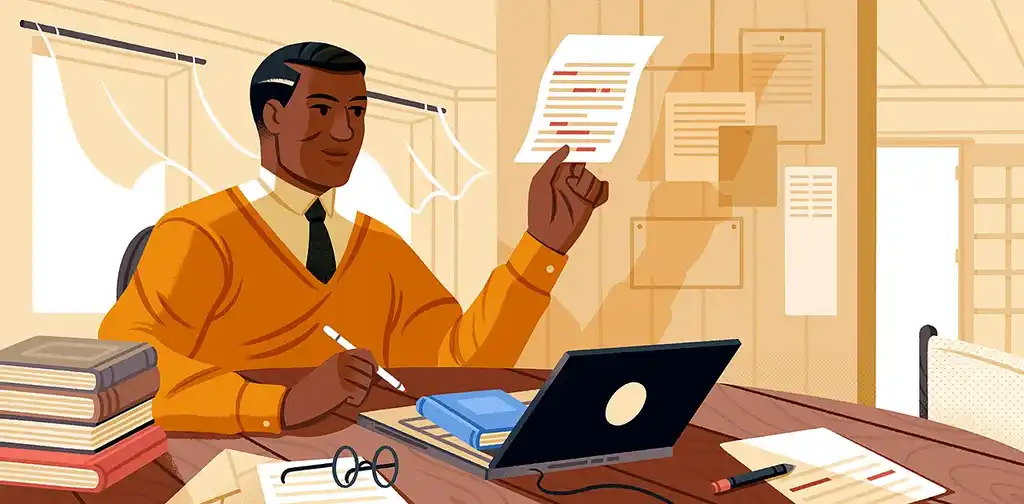
MEET EDITORS
Polish your book with expert help
Sign up, meet 1500+ experienced editors, and find your perfect match.
What is line editing versus copy editing?
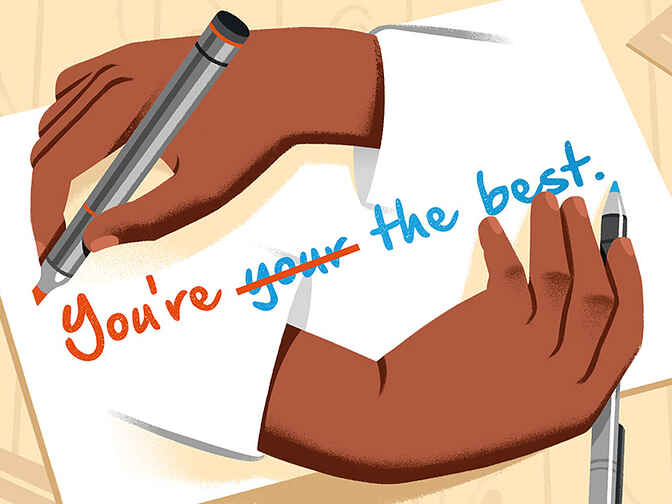
Line editing is a part in the book editing process where the editor aims to improve the clarity of a piece of writing. A professional line editor examines the manuscript on a sentence level, leaving suggestions for word choice, syntax, and tone to enhance the author’s writing style and the text’s overall effectiveness.
Let’s add to this now by clarifying the issue of copy editing vs. line editing. Copy editing is a general term for editing a piece of text , encompassing mechanics like spelling, grammar, and punctuation. Line editing is a more in-depth version of copy editing, one that focuses on style as well. Both types of editing aim to produce more readable prose, but line editing is more nuanced.
Basically, when compared with other types of editing , standard copy editing is fairly cut-and-dried, while line editing includes more subjective, interpretive stuff. If you’re still not sure about the difference, check out our examples of copy editing vs. line editing below! But first, take a look at the untouched passage:
There was no possibility of taking a walk that day. We had been wandering, indeed, in the leafless shrubbery an hour in the morning; but since dinner (Mrs. Reed, when there was no company, dined early) the cold winter wind had brought with it clouds so sombre, and a rain so penetrating, that further out-door exercise was now out of the question.
Fans of 19th century literature will recognize this as the opening to Jane Eyre , which is arguably already flawless. However, humor us for a moment and imagine that two different editors — a copy editor and a line editor — have been tasked with updating the prose to be more accessible, while remaining true to Charlotte Brontë’s voice.
Copy editing vs. line editing examples
Given those instructions, the copy editor might make the following changes:
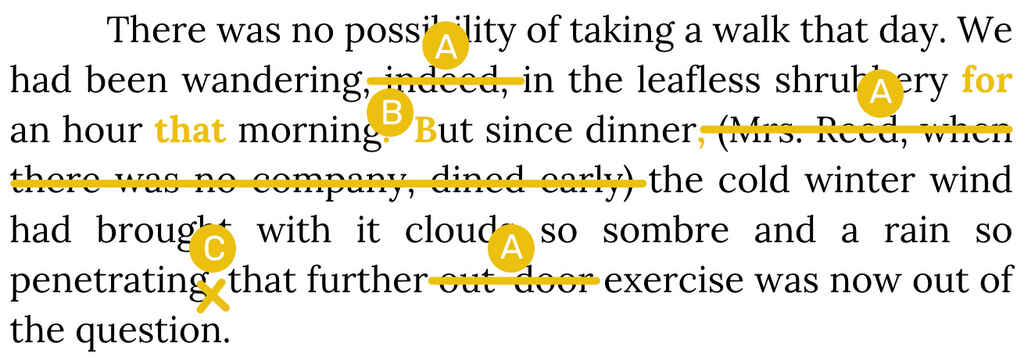
NOTE A: Superfluous phrases; delete for concision. NOTE B: Split lengthy sentence into two sentences. NOTE C: No need for a comma here anymore.
These copy edits make the passage more clear and concise for the modern reader. However, a line editor would adjust even more:
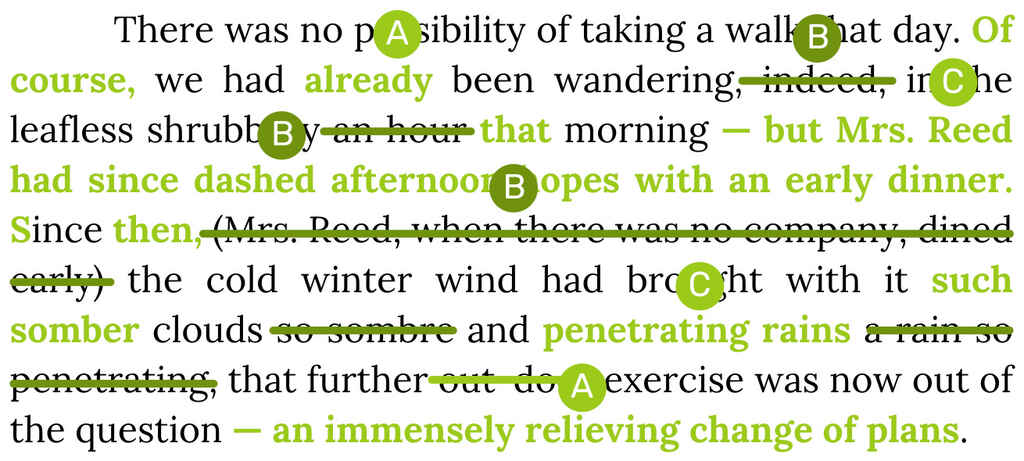
NOTE A: To show Jane's dislike of walking. NOTE B: Superfluous phrases; delete for concision. NOTE C: Stronger phrasing re: Mrs. Reed and the weather.
In addition to technical edits like deleting redundant phrases, this line edit bolsters the passage with better phrasing and a new layer of meaning — we realize that Jane isn’t fond of walking, especially in the cold. This is the power of line editing: it doesn’t merely fix the prose, it builds on it to improve the reader’s overall understanding.

Let’s break down the line editing process even more. Say you've just finished writing an 18th-century paranormal romance called Heartblood . The story seems destined for the big screen, the characters are vivid and interesting, and the spelling and grammar are pretty good.
However, the prose itself could use a bit of… finessing. Time for a thorough line edit! Here are some more ways that line editing can upgrade your book — with sample passages and bullet points to show exactly what a professional editor might suggest.
It strengthens the prose with better word choices
Line editing facilitates strong, precise word choice and gets rid of clichés. A professional editor would note where word choice can be improved and what they'd use instead, as we’ve done below this passage.
Clothilde hugged Janus. As star-crossed lovers, they felt like the whole world was against them. It made Clothilde feel bad. Thinking about her fellow vampires' negative response to Janus' meaty fragrance, Clothilde couldn't help but weep tears of fresh blood.
- “Star-crossed lovers” and “the whole world was against them” are clichés you want to avoid. Use stronger language to bring your characters’ situation to life.
- “It made Clothilde feel bad” — weak word choice. Be more specific!
- Is “meaty fragrance” really what you want here? Why not “scent”? And why were the vampires reacting negatively? Clarify in this passage, even if only to remind the reader of how painful it was for Clothilde.
- Overall, try describing what Clothilde feels rather than what’s simply happening to her — do your best to follow the golden rule of showing, not telling!
The final prose-strengthening line edit might look like this:
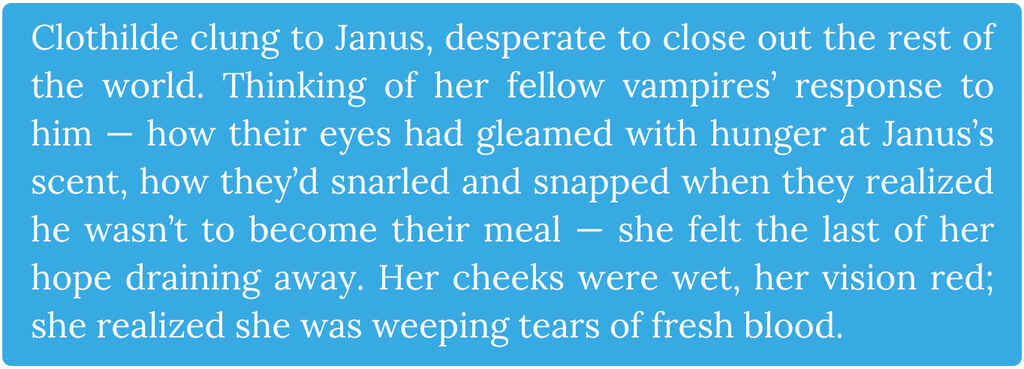
Hire an expert line editor
Available to hire
Reliable and versatile proofreader and copy editor with a passion for all things Sci-Fi and Dickens.
I have many years experience of editing Open University materials - Spanish, education, history, music and ELT. I now edit fiction as well.
Proofreader/editor for 11+ years, reader for 40+, and as a lifelong fan, horror is my go-to genre.
Browse more profiles on Reedsy
reedsy marketplace
Trims the fat for a tighter reading experience
Line editing will also ensure that your syntax is concise. Cutting sentences and even whole passages is one of the most difficult parts of editing, but that's what a line edit is for!
Janus was on his way to a meeting of the wizard's council when he saw the broadsheets being passed out on the street that clearly had something to do with the embezzlement case Clothilde was investigating, even if he couldn't see the lettering very clearly. Clothilde's investigation of the embezzlement was not going well. His trip to the council meeting was also now going to be similarly derailed.
- The first sentence is long and unwieldy. To make it easier for readers to navigate, break it up and condense the language.
- Unnecessary repetition — you don't need to mention “Clothilde's investigation of the embezzlement case” right after “the embezzlement case Clothilde was investigating”.
- In the last sentence, you don't need “also” and “similarly”.
The final condensing line edit might look like this:

Fills in gaps that could confuse the reader
Crucially for your story, a line edit will also fix plot and character inconsistencies. These may be as significant as a missing event in the plot , or as simple as a descriptive blunder, like this next excerpt.
Clothilde gagged at the smell of blood. Janus regarded her, now clearly in pain, with mild disinterest.
- Isn't Clothilde a vampire? Why would she gag at the smell of blood, which she presumably drinks? If she's truly repulsed, explain why; if not, change the reaction to something less negative.
- Furthermore, why does Janus respond to her pain with “mild disinterest”? Aren't they supposed to be deeply in love?
The final clarifying line edit might look like this:

Improves the flow by correcting mood and tone
Finally, a line edit will correct writing that strikes the wrong tone. This is especially important during dramatic and/or climactic scenes, like the following passage.
“Clothilde!” Janus screeched, as her eyes dimmed and dulled. The stake stuck out of her shapely chest at an angle that made it look like a light switch in the off position. The embezzler giggled. Janus glared at him indignantly and pulled the stake out with a squelching sound.
- This is meant to be the book's tragic climax, but the odd tone makes it anti climactic. Adjust your word choice to convey the gravity of the high point — you might try better verbs for “screeched” and “giggled”, and change phrases like “glared at him indignantly” and “squelching sound”, which sound a bit silly and make the stakes feel low.
- Is her death scene really an appropriate time to comment on Clothilde's “shapely” chest? Choose a more solemn descriptor for the moment (like “heaving” or “bleeding”) or remove the word entirely.
- The light switch simile is out of place because of the novel's setting — as an 18th century wizard, Janus wouldn't know what a light switch is! Be careful of anachronisms like this when writing historical fiction.
The final tone-correcting line edit might look like this:

Final tips for self-editing
By now you should have a pretty strong sense of what line editing is and why it’s important! If you plan to revise your novel yourself , however, here are some final tips to make sure your edit is effective.
✔️ Set your manuscript aside for a few days. Let your own language become new to you again. Only then can you approach it as an editor.
✔️ Read everything out loud. Do your sentences flow well? Does the order make sense? Does the speech sound natural ? If you find yourself gasping for breath before the end of a sentence, consider slicing it up. If you stumble over a certain word, rework or cut it.
✔️ Audit for your own personal clichés. You already know to avoid the common ones — expressions like “in the nick of time” and “raining cats and dogs”. But writers should pay attention to their own stylistic quirks as well!
For example, do you use way too many semicolons? Do your characters constantly “chortle” instead of laugh or “declaim” their words instead of saying them? Whether or not these choices were intentional while writing, be mindful about them during your line edit.
🚫 Become a thesaurus junkie. When it comes to improving your word choice, a thesaurus can definitely help. But going overboard with it will ruin your prose — transforming blue eyes into “ultramarine orbs” and bad feelings into “substandard affections”.
🚫 Insult your reader. When editing your manuscript for clarity, you may be tempted to make some edits in order to, well, clarify your prose. But don’t go too far and start spoon-feeding your readers! They're smart and should be guided through the story by a similarly discerning author — not stuck with interpretive training wheels.
🚫 Refuse to ask for help. Even if you decide not to hire a professional editor, that doesn't mean you must go it alone. Consider seeking out second readers or even joining a critique circle for some third-party feedback.
Now that you’ve learned about this crucial type of editing, you can use your knowledge to turn out a book as polished as your ideas deserve! Whether you end up hiring a professional or engaging your inner editor, your manuscript (and readers) will thank you.
Continue reading
Recommended posts from the Reedsy Blog
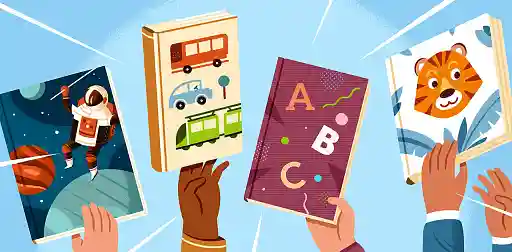
Why You Should Write More Than One Picture Book (+ Children’s Book Ideas)
To break into the market as a professional picture book author, having just one book idea isn’t enough. Here’s why.

Romantasy: The Hottest New Trend in Fiction, Explained
Everything you need to know about the viral publishing trend that everyone’s talking about, complete with tips on how to write it and examples from popular contemporary literature.
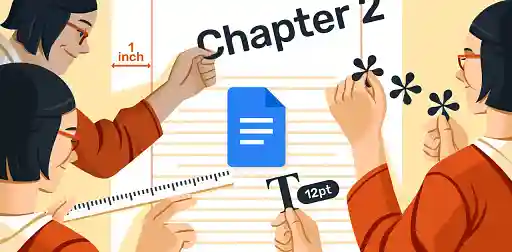
How to Format a Book in Google Docs in 7 Simple Steps
While there are much better alternatives, here's how you can format a book in Google's popular writing app.

The 6 Best Ghostwriting Companies to Write Your Book
Learn which companies you can trust if you want to find a ghostwriter to write your next book.
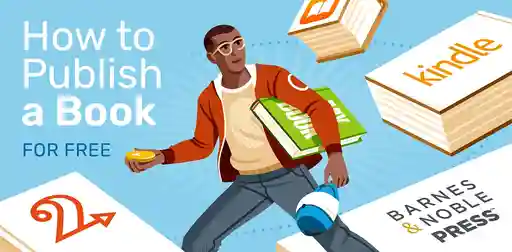
How to Publish a Book For Free: The 7 Best Sites
If you want to publish your book without spending a single dime, check out this handy list of 7 free self-publishing services.
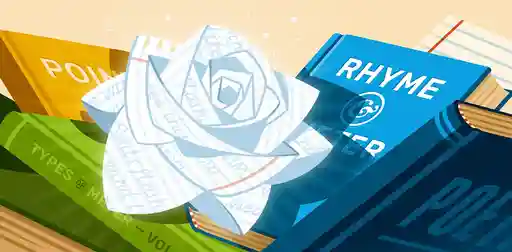
12 Elements of Poetry Every Poet Needs to Know
In order to become a poet, you need to learn the basics. Find out more about the foundations of poetry in this post, where we look at 12 of its most important elements.
Join a community of over 1 million authors
Reedsy is more than just a blog. Become a member today to discover how we can help you publish a beautiful book.
Work with the best editors in the industry
Sign up to request quotes from editors who shape bestsellers.

1 million authors trust the professionals on Reedsy. Come meet them.
Enter your email or get started with a social account:

What is Line Editing and How is it Different from Other Types of Editing?

As writers prepare for NaNoWriMo and gear up for an intense month of drafting, it's easy to focus solely on getting words on the page. But once the writing frenzy ends and you have a rough draft in hand, the real work begins: editing. Editing is an essential step in transforming your NaNoWriMo manuscript into a polished novel ready for publication. One of the key phases in this process is line editing.
In this blog, we'll explore what line editing is, how it differs from other types of editing, and why it's such an important step for writers—especially after NaNoWriMo.
What is Line Editing?
Line editing is a type of editing that focuses on the writing at the sentence and paragraph level. The goal is to improve the overall flow, clarity, and style of your writing by examining how each line contributes to the work as a whole. Unlike developmental editing, which focuses on big-picture elements like plot, character development, and structure, line editing hones in on the finer details of your writing.
Key aspects of line editing include:
Clarity: Ensuring that your sentences are clear and easy to understand.
Flow: Improving the rhythm and flow of your prose to keep readers engaged.
Word Choice: Refining your word choices to make your writing more precise and impactful.
Tone and Style: Enhancing the tone and style to ensure consistency throughout the manuscript.
Sentence Structure: Reworking sentences to improve readability and eliminate awkward phrasing.
Line editing goes beyond simple grammar corrections; it focuses on the artistry of language, helping you craft prose that is engaging, polished, and effective.

How is Line Editing Different from Other Types of Editing?
There are several types of editing, each serving a different purpose in the manuscript development process. Here’s how line editing compares to other forms of editing:
Developmental Editing vs. Line Editing
Developmental editing focuses on the overall structure and content of your novel. It addresses big-picture elements. Developmental editors work with you to ensure your story is cohesive, well-structured, and emotionally engaging. This type of editing usually happens early in the revision process.
Line editing, on the other hand, takes place after the structure of your novel is solid. It focuses on refining the language and style of your writing at the sentence level. While developmental editing deals with macro-level elements of your story, line editing deals with the micro-level details of your prose.
Developmental Editing: "Is the pacing of the story consistent? Are the character arcs fully realized?"
Line Editing: "Is this sentence clear and concise? Can this paragraph be rewritten to flow more smoothly?"
Copy Editing vs. Line Editing
Copy editing and line editing are often confused because they both deal with the finer details of writing. However, they serve different purposes.
Copy editing focuses on correcting grammar, punctuation, spelling, and formatting issues. The goal of copy editing is to ensure that your manuscript adheres to language conventions and is free of errors. It’s a technical process that ensures accuracy and consistency throughout your book.
Line editing, by contrast, is more stylistic. It focuses on improving the flow, clarity, and effectiveness of your writing. Line editors help you choose the right words, vary sentence structure, and enhance your overall writing style, making sure your prose resonates with readers.
Copy Editing: "Is this sentence grammatically correct? Are the punctuation marks used correctly?"
Line Editing: "Does this sentence convey the intended meaning clearly and effectively? Could this paragraph be more impactful with different word choices?"
Proofreading vs. Line Editing
Proofreading is the final stage of the editing process and is often considered the last line of defense before publication. It involves carefully reviewing the manuscript to catch any remaining typos, formatting errors, or inconsistencies that were missed in previous edits. Proofreading is about ensuring the manuscript is error-free and polished.
Line editing, on the other hand, happens earlier in the process. While proofreading focuses on fixing errors, line editing aims to elevate the quality of the writing itself. It’s about refining your prose to make it more engaging and readable.
Proofreading: "Is this word spelled correctly? Are there any missing punctuation marks?"
Line Editing: "Does this sentence flow well with the rest of the paragraph? Can this sentence be written more clearly or concisely?"

Why Line Editing is Essential for NaNoWriMo Writers
After NaNoWriMo, your manuscript will likely need more than just a quick polish. Writing at such a rapid pace can lead to sentences that are clunky, unclear, or repetitive. Line editing is an essential step in taking your draft from rough to refined, helping you improve the quality of your writing and ensure your story is engaging from start to finish.
Here’s why line editing is particularly important for NaNoWriMo participants:
Refining Rough Prose
NaNoWriMo is all about getting words on the page, often without much concern for elegance or precision. After the writing rush is over, line editing helps you refine your prose. A skilled line editor will help you rework clunky sentences, cut unnecessary words, and enhance the overall readability of your writing.
Strengthening Your Voice
Line editing helps you hone your unique authorial voice. During NaNoWriMo, it’s easy to lose track of your voice as you focus on hitting your word count. Line editing helps bring your voice back to the forefront, ensuring consistency in tone and style throughout your manuscript.
Improving Pacing and Flow
The fast-paced nature of NaNoWriMo can lead to awkward pacing or disjointed transitions between scenes and chapters. Line editing smooths out these rough spots by refining the flow of your narrative. An editor will look for areas where the story drags or rushes and suggest improvements to keep readers engaged.
Enhancing Reader Engagement
Ultimately, line editing enhances the reader’s experience. Clean, well-crafted sentences keep readers immersed in your story. If your prose is unclear or awkward, readers may become distracted or lose interest. Line editing ensures that your writing is engaging, polished, and professional.

The Line Editing Process
Here’s a breakdown of how the line editing process typically works:
Initial Read-Through
The line editor will begin with an initial read-through of your manuscript, paying close attention to sentence structure, word choice, and overall clarity. They’ll identify areas where the prose could be stronger, more concise, or more effective.
In-Depth Edits
Next, the editor will go through your manuscript line by line, making detailed edits. This may include reworking sentences for clarity, improving word choice, refining dialogue, and ensuring the writing flows smoothly. The editor will focus on enhancing your writing without altering your unique voice or style.
Feedback and Suggestions
In addition to making direct edits, a line editor may also provide feedback and suggestions for improvement. For example, they may suggest rephrasing certain sections, varying sentence length for better rhythm, or cutting redundant phrases. This feedback helps you understand the reasoning behind the changes and improves your writing in the long run.
Revision and Collaboration
Line editing is a collaborative process. After receiving the edits and feedback, you’ll have the opportunity to review the changes, make revisions, and discuss any suggestions with your editor. This back-and-forth ensures that the final product is polished and aligns with your vision for the manuscript.

How One Small Step Writing Services Can Help
At One Small Step Writing Services, we offer line editing services that can help you take your NaNoWriMo draft to the next level. Our team of experienced editors will work with you to refine your prose, enhance clarity, and ensure that your writing is engaging and professional. Whether you’re working on a novel, memoir, or any other project, we can help you polish your manuscript and prepare it for publication.
Here’s how we can assist you:
Line Editing: We’ll refine your sentences, improve word choice, and ensure your writing flows smoothly from beginning to end. Our line editing services focus on enhancing clarity, style, and readability while preserving your unique voice.
Post-NaNoWriMo Editing: After NaNoWriMo, your manuscript will need more than just a quick proofread. We offer comprehensive editing services, including developmental editing, line editing, and copy editing, to help you turn your draft into a polished book ready for publication.
Line editing is an essential step in the editing process, especially for writers coming out of NaNoWriMo with a fast-drafted manuscript. While developmental editing helps you shape the overall structure of your story, line editing focuses on perfecting your prose, ensuring that your writing is clear, engaging, and polished. At One Small Step Writing Services, we’re here to help you refine your NaNoWriMo manuscript and bring your story to life. Let us assist you in transforming your draft into a novel that’s ready for readers.
- Self-Publishing
Recent Posts
Riches or Recognition? The Realities of Becoming a Self-Published Author
Writer’s Block – The Struggle is Real
Expert Allies: Leveraging Professionals in Self-Publishing
Comentários

ONE SMALL STEP
WRITING SERVICES

IMAGES
COMMENTS
Masterful writing isn't just about telling a compelling story—it's about finding the most effective language to tell that story. That's where a line editor is indispensable. While the job has commonalities with copyediting and developmental editing, line editing is a distinct art and a critical part of the writing process.
Line editing sits uniquely within this spectrum, combining aspects of both creative and technical refinement. In practice, line editing involves a meticulous, line-by-line examination of your manuscript. The goal is to make the writing as strong as possible by enhancing clarity, eliminating redundancy, and ensuring that each word serves a purpose.
Creative Writing is the art of using words to express ideas and emotions in imaginative ways. It encompasses various forms including novels, poetry, and plays, focusing on narrative craft, character development, and the use of literary tropes.
Line editing is a part in the book editing process where the editor aims to improve the clarity of a piece of writing. A professional line editor examines the manuscript on a sentence level, leaving suggestions for word choice, syntax, and tone to enhance the author's writing style and the text's overall effectiveness. ...
Line editing is an essential step in the editing process, especially for writers coming out of NaNoWriMo with a fast-drafted manuscript. While developmental editing helps you shape the overall structure of your story, line editing focuses on perfecting your prose, ensuring that your writing is clear, engaging, and polished.
If line editing focuses on flow, creative content, and writing style, what is the difference between a line edit and a copy edit? A copy edit is much more technical. It's the editing process where you focus on editing text looking for spelling, grammar and punctuation errors as well as consistency and continuity in regards to name spellings ...
The use of rhyme unites key stanzas such as lines one, three, and four, which elaborate upon the meaning of the world ending in fire. ... Creative writing is the art of using words to make things ...
However, all writers can benefit from learning more about how humor functions in writing. Learn more about humor here. 9. Imagery. If you've practiced or studied creative writing, chances are you've encountered the expression "paint a picture with words." In poetry and literature, this is known as imagery: the use of figurative language ...
Line. In a fishing context, your line connects the hook to your reel which connects to your rod and hand. So, it is the connection and mechanism by which you're going to catch that fish in the end. Now, let's put that into a writing context. Your line is the lifeline, i.e. the journey, you
Outlines are useful for all forms of writing, from academic papers to creative writing. They help compartmentalize the stages of the writing process: When writing the outline, you can focus exclusively on the structure and big picture; when writing the first draft, you can focus on writing details without being distracted by organizational ...